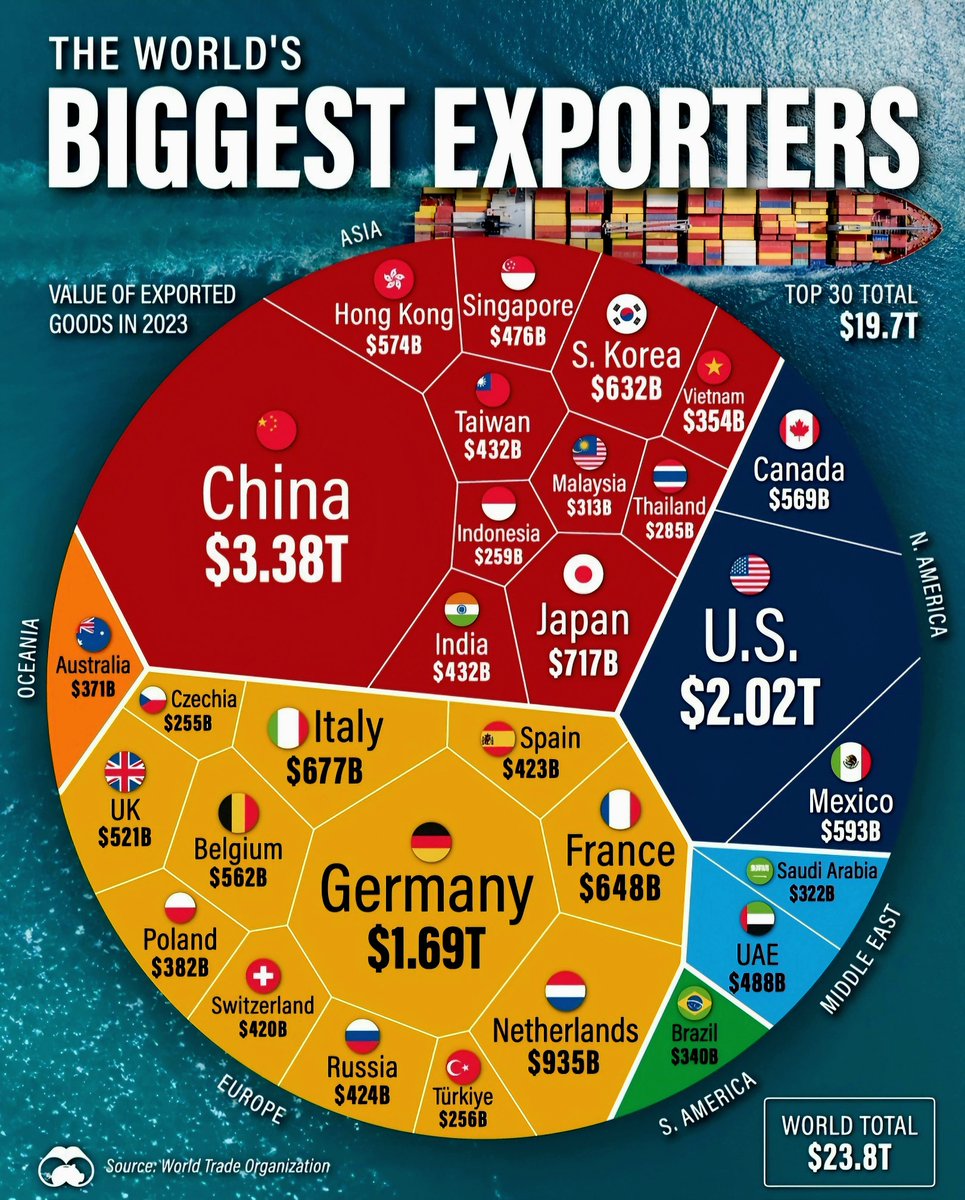Select Language:

2025’s Top 30 Countries Leading Global Export Markets
1. China Dominates as the World’s Largest Exporter
With exports valued at $3.38 trillion this year, China continues to secure its position as the world’s leading exporter. The country’s manufacturing powerhouse spans electronics, machinery, textiles, and consumer goods, cementing its role in global supply chains. China’s export dominance influences prices, supply availability, and international trade negotiations worldwide.
2. The United States Ranks Second with Over $2 Trillion in Exports
The U.S. remains a crucial player in global exports, with a tally exceeding $2 trillion. Key sectors fueling this include aerospace, automobiles, agriculture, and technology products. As the economy evolves towards innovation, the export focus often shifts toward high-tech and renewable energy goods, reflecting America’s growing industries.
3. Japan and South Korea Continue Their Export Success Stories
Japan exports reached around $717 billion, maintaining a reputation for precision machinery, automobiles, and electronics. South Korea closely follows with $632 billion, driven by semiconductors, ships, and petrochemicals. These East Asian titans heavily influence global tech supply chains, including chip manufacturing and vehicle exports.
4. Southeast Asia’s Export Powerhouses
Singapore, Hong Kong, and Vietnam collectively contribute over $1.3 trillion to the global export economy. Singapore, with $574 billion, is a finance and logistics hub specializing in refined petroleum and pharmaceuticals. Vietnam, projecting rapid growth, exports electronics, textiles, and furniture, reflecting its manufacturing boom.
5. European Countries with Notable Export Figures
Germany leads Europe with an export value of $1.69 trillion, mainly in automotive, machinery, and chemical sectors. The Netherlands, Italy, France, and Belgium follow, with their exports spanning electronics, luxury goods, and pharmaceuticals. The UK’s exports stand at $521 billion, focusing on aerospace and financial services.
6. Middle East: Oil and Gas Drive Export Revenues
UAE remains the Middle East’s top exporter with $488 billion, primarily fueled by oil, petrochemicals, and increasingly, renewable energy investments. Saudi Arabia follows, with exports valued at $322 billion, underscoring its significant role in global oil markets.
7. South America’s and Oceania’s Major Exporters
Brazil exports about $340 billion, mainly in commodities like soybeans, iron ore, and oil. Australia’s exports hit $371 billion, primarily driven by minerals, coal, and agricultural products, reinforcing its status as a critical supplier to Asia and beyond.
8. Global Trade Totals Break the $19.7 Trillion Mark
Collectively, the top 30 exporting nations account for nearly $19.7 trillion in exports, with world trade valued at approximately $23.8 trillion in 2025. This underscores the ongoing importance of international commerce for economic stability and growth.
9. Impact of Global Trade Dynamics
Recent years have seen shifts in manufacturing hubs, increased diversification of export portfolios, and ongoing efforts to combat trade barriers. The continued dominance of Asian markets exemplifies their strategic investments in technology and infrastructure, while Europe’s focus on high-value manufacturing boosts its global standing.
10. Looking Forward
As 2025 unfolds, emerging markets are poised to increase their exports, especially in renewable energy, sustainable technologies, and digital services. Geo-economic shifts will likely influence how these countries position themselves in the evolving global trade network, with many striving to move up the export value chain.
This detailed snapshot highlights the crucial players in global trade for 2025, demonstrating the interconnected nature of economies and industries shaping the world’s market landscape today.






